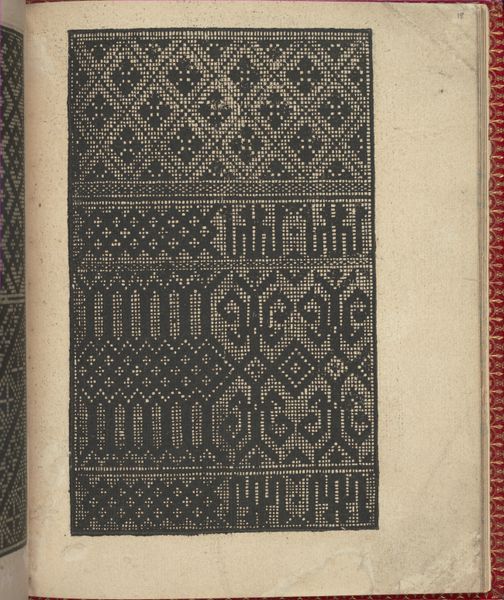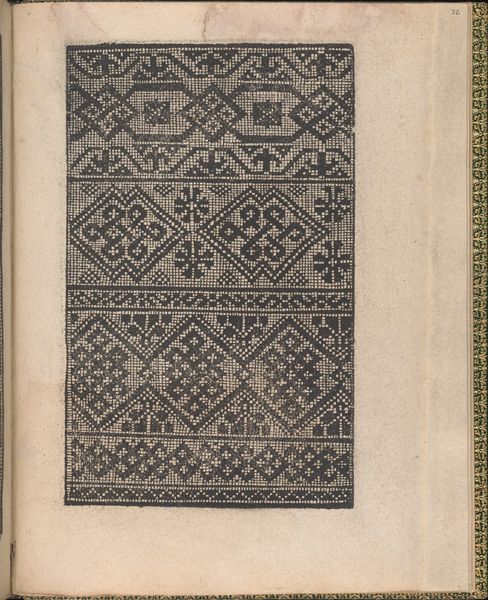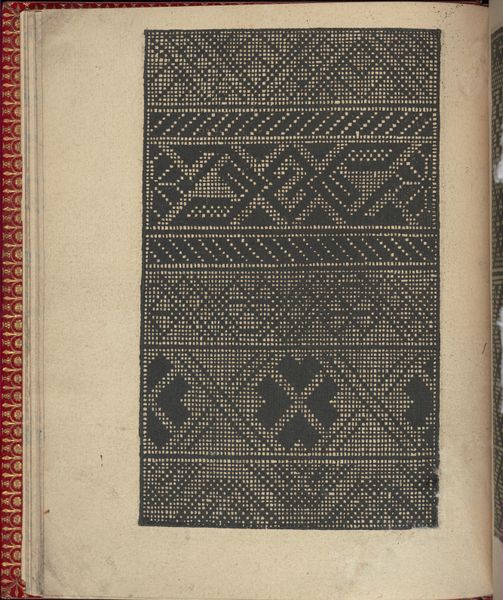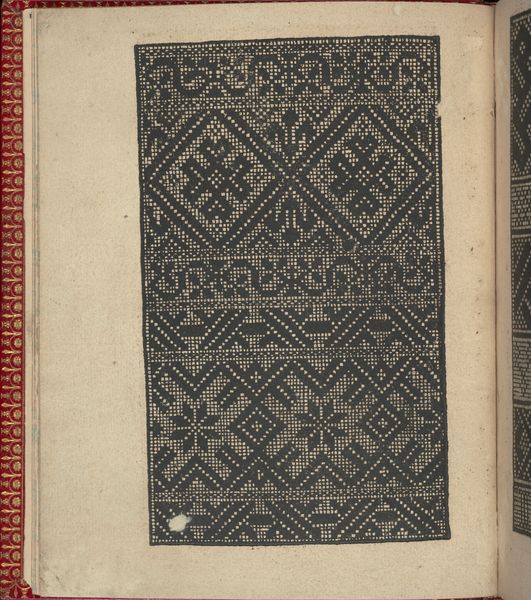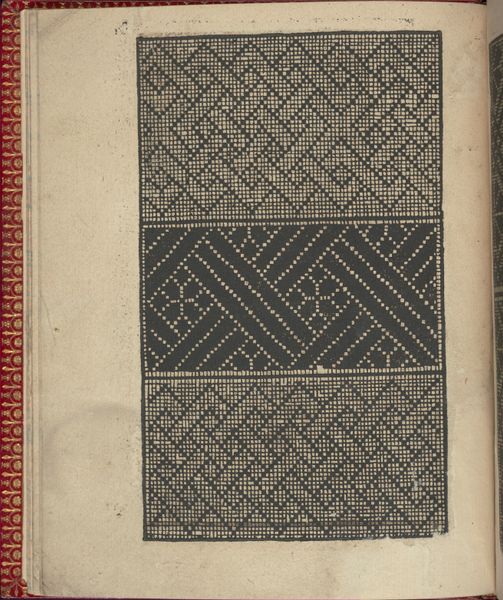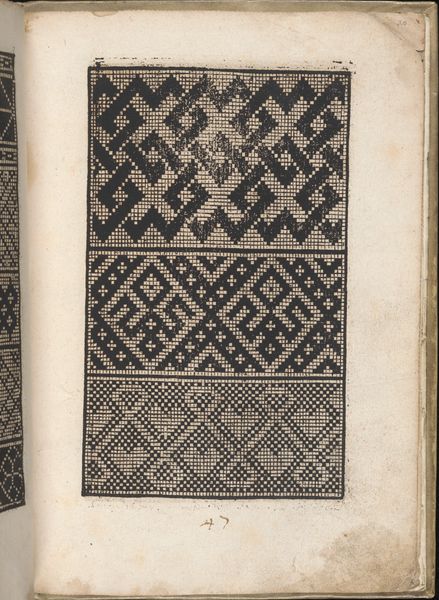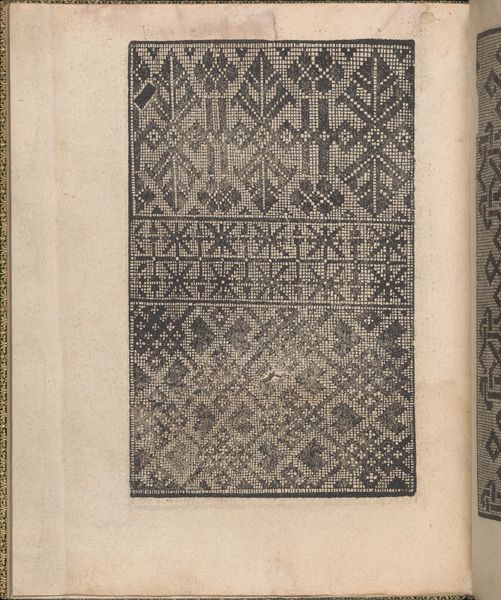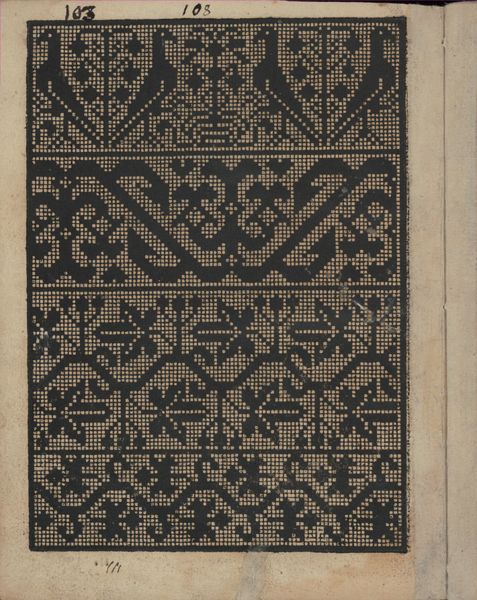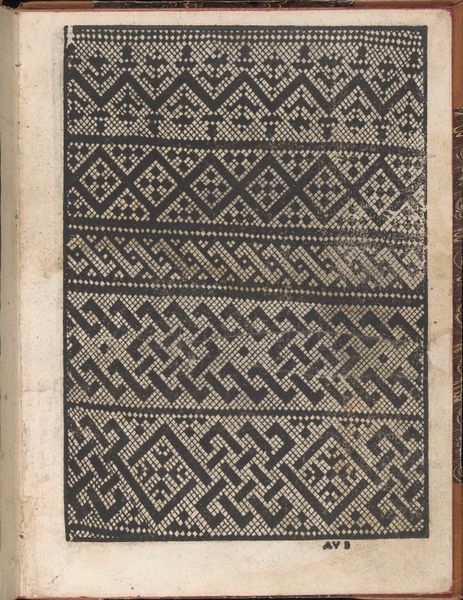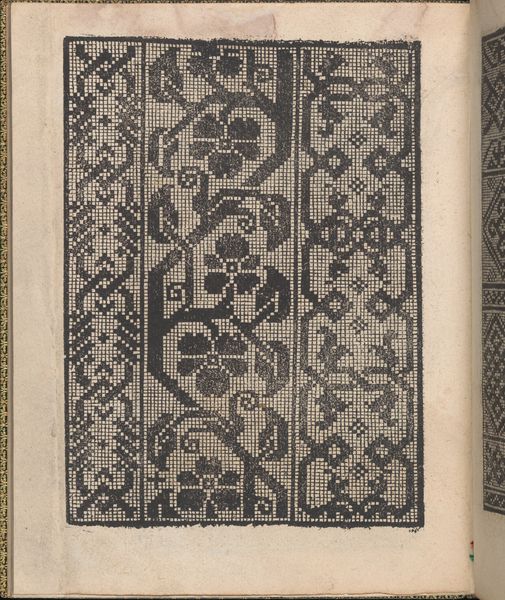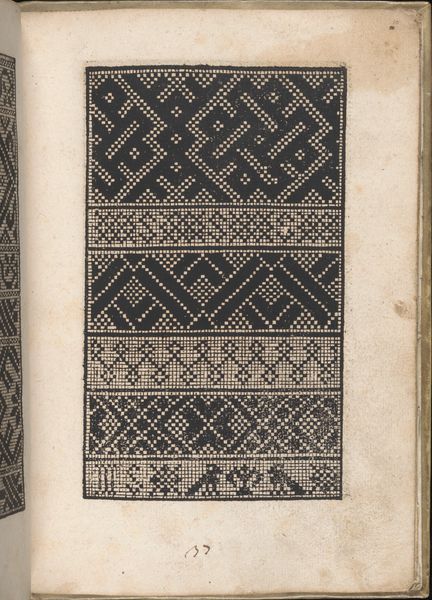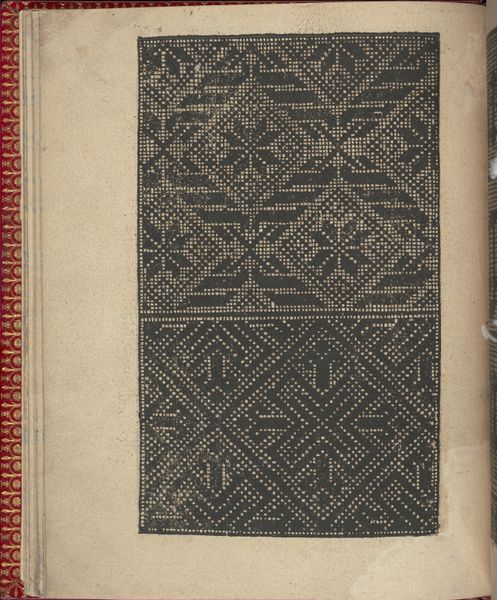
Ce est ung tractat de la noble art de leguille ascavoir ouvraiges de spaigne... page 17 (recto) 1527 - 1540
0:00
0:00
drawing, graphic-art, print, textile
#
drawing
#
graphic-art
#
medieval
# print
#
book
#
textile
#
geometric
Dimensions: Overall: 6 7/8 x 5 11/16 in. (17.5 x 14.5 cm)
Copyright: Public Domain
Curator: This intricate page, dated between 1527 and 1540, is from Willem Vosterman’s book, “Ce est ung tractat de la noble art de leguille ascavoir ouvraiges de spaigne… page 17 (recto)”, currently residing at The Metropolitan Museum of Art. Editor: Immediately, I'm drawn to the hypnotic patterns; it looks like constellations laid out on a cosmic loom. A sort of dream logic in geometric form. Curator: It’s a woodcut, and while it resembles something woven, the artwork is a pattern book, a template if you will, for needlework of the period. Look closely and you will notice it is primarily intended for “Ouvraiges de Spaigne”—Spanish embroidery, popular throughout Europe. Editor: Knowing its purpose gives the image such grounded weight! It's more than decorative; it is technical drawing defining the cultural and commercial textile processes of the time. These precise patterns speak volumes about value, and who was creating the goods. Were they women's domestic crafts, guild productions, workshop training guides? Curator: Most likely all those things at once. Vosterman cleverly tapped into a thriving market and a well of artistic potential by recording common and popular designs for mass appeal and practical instruction. You see, its artistic intention wasn’t only self-contained, or precious. Editor: That changes my perception entirely. I was originally charmed by this book page but realizing it was made from wood makes it even more compelling! I am always drawn to material realities and social impacts; labor relations; commodification of skill—and how even repetitive tasks contain enormous cultural information. The geometric motifs appear functional now too - for easier gridding, division and copying. Curator: Precisely! Think of this page as a vital document. One way into grasping period aesthetic ideals, sure, but especially craft economies: how value and beauty commingle for so many then, as now. What do we make and why— that echoes and shouts out to us still! Editor: So true—this piece lets us grasp the convergence of artistic intention and material processes in daily life centuries ago, and leaves me contemplating where technology and craft meet today.
Comments
No comments
Be the first to comment and join the conversation on the ultimate creative platform.
